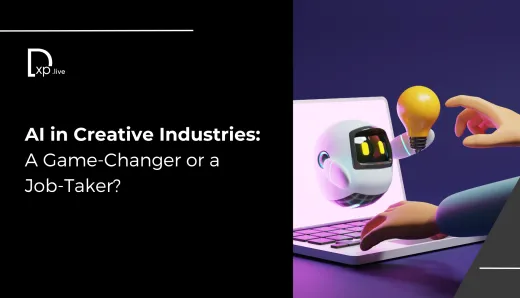How Businesses Can Fortify Themselves Against Ransomware

Cybersecurity has become one of the most pressing challenges for U.S. businesses, government agencies, and healthcare organizations. With over 500 ransomware attacks blocked since 2021 by Homeland Security Investigations (HSI), the growing scale of cyber threats is undeniable. As businesses and institutions continue to rely heavily on digital infrastructure, the importance of cybersecurity and threat intelligence cannot be overstated.
Ransomware attacks, in particular, have wreaked havoc on organizations across various sectors. These attacks disrupt operations, drain resources, and put sensitive data at risk. In an era where data is often the most valuable asset for businesses, taking proactive measures to protect against cyber threats is not just advisable but critical. This opinion blog explores the current landscape of ransomware attacks in the U.S., the importance of cybersecurity, the role of generative AI in building a cyber-secure world, and practical steps businesses should take to shield themselves from breaches and attacks.
The Rising Threat
Ransomware has become one of the most feared cyberattacks in recent years, with attackers using increasingly sophisticated methods to target U.S. businesses and institutions. In a ransomware attack, cybercriminals infiltrate an organization's network, lock down critical data, and demand a ransom for its release. These attacks are not just disruptive—they are costly. From lost revenue to reputational damage, the aftermath of a ransomware breach can cripple a business.
The report from Homeland Security Investigations underscores the gravity of this threat. Out of the 537 ransomware attacks blocked by HSI since 2021, nearly 20% targeted U.S. government agencies, followed by the healthcare sector. The healthcare industry, in particular, remains a lucrative target for cybercriminals due to the sensitive nature of patient data. Once healthcare systems are locked down, the stakes are life or death, making ransom payments more likely.
Beyond government and healthcare, businesses of all sizes face the growing menace of cyberattacks. With digital transformation accelerating, companies are more vulnerable than ever, making cybersecurity an essential investment. But it's not just about preventing attacks—it's about having robust response and recovery plans in place when breaches occur.
Why Cybersecurity is Non-Negotiable
As the number of ransomware attacks continues to rise, the question is no longer if your business will be targeted, but when. Organizations must take a proactive stance toward cybersecurity by investing in threat intelligence, implementing compliance measures, and ensuring they are ready for the evolving nature of cyber threats.
Threat intelligence plays a crucial role in identifying potential vulnerabilities before attackers exploit them. By gathering information on emerging threats, companies can stay one step ahead of cybercriminals. Monitoring network traffic, patching software vulnerabilities, and conducting regular security audits are all critical steps toward maintaining a strong cybersecurity posture.
Moreover, regulatory compliance has become a fundamental part of cybersecurity. Many industries—such as finance and healthcare—must adhere to strict data protection regulations, like HIPAA and GDPR, which demand stringent cybersecurity measures. Failure to comply with these regulations can result in hefty fines, not to mention the loss of customer trust.
The Role of Generative AI
Generative AI (Gen AI) is emerging as a powerful ally in the fight against cyberattacks. While AI has traditionally been used to detect and respond to threats, generative AI takes this a step further by anticipating potential attacks before they happen. By analyzing patterns in network traffic and identifying anomalies, Gen AI can detect subtle signs of malicious activity that might go unnoticed by human operators.
For instance, AI can automatically scan for software vulnerabilities that cybercriminals typically exploit in ransomware attacks. With the ability to process massive amounts of data in real-time, AI can identify these weaknesses faster than manual methods ever could. This allows businesses to patch vulnerabilities before they are exploited, minimizing the risk of a successful attack.
However, while AI can be a powerful tool for cybersecurity, it’s important to recognize that cybercriminals are also harnessing AI for malicious purposes. As noted in the HP Wolf Security report, AI is being used to write malware, making it easier for less-skilled hackers to launch sophisticated attacks. This highlights the ongoing arms race between defenders and attackers in the cybersecurity space.
How Organizations Can Safeguard Themselves
Although threat intelligence and AI can be potent tools in enabling businesses to defend against cyber attacks, organizations also have to take practical steps to secure their data and networks. Some of the major strategies involved include:
Regular Security Audits
Have a regular security audit to identify possible vulnerabilities. Moreover, penetration tests must be included in this audit that mimics an attack and lets one assess how well your systems perform against such an attempt. This may be done by recognizing the weaknesses well before a cybercriminal is in a position to exploit them.
Invest in Employee Training
Phishing attacks depend on employees having weak defenses who do not suspect anything as they click on bad links or download infected files. Constant training of the employees to spot phishing and implement best practices concerning passwords minimizes the risk of a data breach.
Backup Data Regularly
Having recently backed up data can be a good fairy in ransomware attacks. Companies should have a current system of backup and store the backups elsewhere offline, such that cybercriminals cannot access it. This will help the business regain its data without losing precious time and money.
Implement Multi-Factor Authentication (MFA)
Multi-factor authentication adds a layer of protection by requiring individuals to authenticate multiple ways. It could either be an SMS code or a biometric scan; a multi-factor authentication makes it difficult for hackers to reach sensitive information even if they have gained the login credentials.
Develop an Incident Response Plan
Despite the best cybersecurity measures, a data breach can always happen. It therefore becomes an important practice for businesses to prepare themselves through an incident response plan. Such a plan would outline steps in case of a breach, including those whom to inform regarding a data breach or ransomware attack and how the breach may be contained and the news communicated to their customers. It can also help mitigate damage through an integrated prepared response.
Staying Ahead of Threats
As cybercriminals continue to evolve their tactics, businesses must be equally agile in adapting their cybersecurity strategies. The integration of AI and threat intelligence into cybersecurity practices offers a promising future, where businesses can anticipate and thwart attacks before they cause harm. But this future will only be realized if companies prioritize cybersecurity as a core component of their operations.
In addition, businesses must embrace a culture of compliance and continuous improvement. Regulatory frameworks will continue to evolve, and staying compliant will require ongoing investment in both technology and employee education. Organizations that fail to meet these standards risk not only financial penalties but also irreversible damage to their reputation.
In a Nutshell
Ransomware attacks are a stark reminder that no business is immune to cyber threats. The growing complexity of these attacks demands a proactive approach to cybersecurity, where threat intelligence, AI, and robust security measures work hand-in-hand. By investing in cybersecurity today, businesses can protect their data, reputation, and future growth from the potentially devastating impact of a cyberattack.
To stay updated on the latest in cybersecurity trends, threats, and solutions, explore more insights at digitalexperience.live. Don’t wait for a breach—fortify your business now and stay ahead of the curve.




